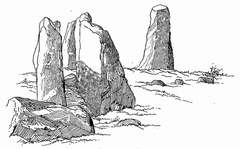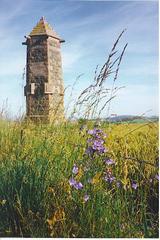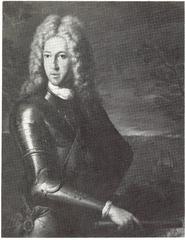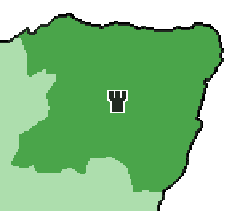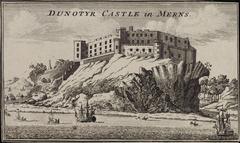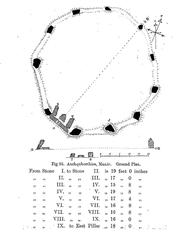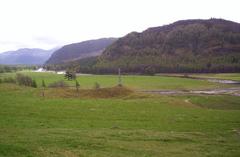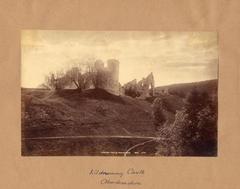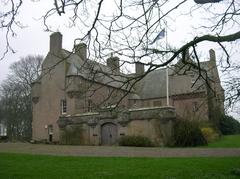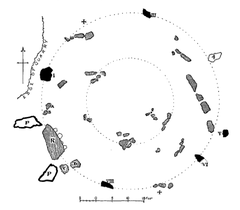Loanhead of Daviot Stone Circle: Visiting Hours, Tickets, and Historical Significance in Ballater, United Kingdom
Date: 15/06/2025
Introduction
Set amid Aberdeenshire’s tranquil countryside near the village of Daviot, the Loanhead of Daviot Stone Circle is one of Scotland’s best-preserved and most significant prehistoric sites. Dating from the late Neolithic to early Bronze Age (c. 2500 BCE), this recumbent stone circle offers visitors a compelling window into ancient ceremonial, funerary, and astronomical traditions unique to northeast Scotland. Its architectural sophistication, ritual use, and lunar alignment make it a must-see for history enthusiasts, archaeologists, and anyone intrigued by Scotland’s ancient heritage (Historic Environment Scotland).
This guide details the monument’s history, cultural and astronomical significance, practical visitor information—including visiting hours, accessibility, travel advice, and nearby attractions—and provides tips for making the most of your visit.
Table of Contents
- Introduction
- Historical Background and Archaeological Significance
- Monument Layout and Main Features
- Site Condition and Preservation
- Visitor Information
- Visual and Interactive Resources
- Frequently Asked Questions (FAQ)
- Summary and Recommendations
- References and Further Reading
Historical Background and Archaeological Significance
Origins and Construction
Loanhead of Daviot is a classic example of the recumbent stone circle tradition, exclusive to northeast Scotland. Built from locally sourced granite, the monument originally featured a ring of ten upright stones (orthostats), two tall flankers, and a massive recumbent stone on the southern arc, forming a circle approximately 21 meters in diameter (Undiscovered Scotland). The recumbent stone alone weighs up to 20 tonnes and is flanked by impressive upright stones, with the others graded in height to form a symmetrical arrangement.
Within the circle, a kerbed ring cairn marks the ceremonial heart of the site, with its construction and use spanning several centuries (Ancient Scotland).
Archaeological Investigations and Discoveries
Archaeological excavations began in the 1930s, revealing pits filled with pottery sherds and charcoal—evidence of ritual deposits. The central cairn yielded cremated human remains, particularly of children, highlighting the circle’s mortuary role (Canmore).
Adjacent to the main circle, archaeologists uncovered a Bronze Age cremation cemetery containing the remains of over 30 individuals, some interred with urns or personal items such as a stone pendant (Historic Environment Scotland). These discoveries indicate the site’s prolonged and evolving significance within the community.
Cultural and Ritual Significance
Recumbent stone circles are distinctive to Aberdeenshire and neighboring regions, with roughly 99 examples identified (Undiscovered Scotland). The consistent placement of the recumbent stone in the southern quadrant, combined with the presence of cremation burials, suggests a deliberate interplay between ritual, funerary, and cosmological functions.
The circle’s southwest alignment and the framing of the southern moonset through the recumbent and flankers indicate its probable use as a lunar calendar and a center for ceremonies tied to celestial events (The Brain Chamber; Historic Environment Scotland).
Monument Layout and Main Features
Recumbent Stone Circle Structure
- Diameter: Approximately 20–21 meters.
- Stones: Originally ten upright granite stones, two tall flankers, and a massive recumbent stone. Today, eight uprights and all three major stones remain.
- Stone Grading: Largest stones near the recumbent, decreasing in size opposite.
- Recumbent Stone: Roughly 3.5 meters long and 24 tonnes, lying on the south-southwest arc (Canmore).
- Flankers: Over 2 meters high, framing the recumbent.
Central Ring Cairn
Within the circle is a well-preserved kerbed cairn, about 13–16 meters in diameter, featuring a hollow center. Archaeological evidence shows its use for cremation burials and rituals spanning several construction phases (Scotland’s Places).
Outlier Stone and Associated Features
To the east, a solitary outlier stone stands about 1.5 meters tall and may have served as a processional or astronomical marker. Remnants of a secondary stone circle and cremation cemetery are located southeast of the main monument (Britain Express).
Stone Characteristics and Markings
The granite stones exhibit colors from pale grey to pinkish hues, with weathering and lichen adding to their ancient allure. Notably, cup marks—small circular depressions possibly of ritual significance—are visible on some stones (Stones of Wonder).
Astronomical Alignment
The recumbent and flankers are aligned to frame the southern moon’s major lunar standstill, reflecting sophisticated astronomical knowledge and reinforcing the circle’s ceremonial purposes (The Modern Antiquarian).
Site Condition and Preservation
Loanhead of Daviot is among Scotland’s best-preserved recumbent stone circles. Most original stones remain upright, with the central cairn largely intact. Conservation and periodic maintenance have ensured its continued accessibility and visibility. Informational boards on-site summarize its archaeological context (Historic Environment Scotland).
Visitor Information
Visiting Hours and Tickets
- Opening Times: Open year-round, 24 hours a day. Daylight visits are recommended for safety and enjoyment.
- Admission: Free; no tickets or advance booking required (VisitAberdeenshire).
Accessibility and Facilities
- Location: 6 km north of Inverurie, Aberdeenshire. Access via minor roads from Daviot; well signposted (Aberdeenshire Council).
- Parking: On-site for standard vehicles only.
- Path: Short woodland trail; surface may be uneven or muddy. Not fully wheelchair accessible; sturdy footwear advised.
- Facilities: No toilets, shops, or shelters. Nearest amenities in Daviot or Inverurie.
Travel Tips and Nearby Attractions
- Combine Visits: Explore other Aberdeenshire stone circles (e.g., Easter Aquhorthies, Sunhoney), castles, and scenic trails (VisitAberdeenshire).
- Best Times: Spring and summer offer lush surroundings; early morning or late afternoon provides ideal lighting and tranquility.
- Weather: Prepare for variable Scottish weather; bring waterproofs and layers.
Guided Tours and Special Events
- Guided Tours: No regular guided tours, but occasional group visits and special events may be organized by local heritage organizations. Check Historic Environment Scotland for updates.
- Solstice/Equinox Events: Occasional gatherings emphasize the site’s astronomical significance, though tree growth may currently obscure the southern horizon (Stones of Wonder).
Safety and Etiquette
- Supervision: Children should be supervised.
- Respect: Do not climb stones or disturb features. Leave no trace.
- Wildlife: Avoid disturbing local fauna and flora.
- Personal Safety: Inform others of your plans, especially when visiting alone or in winter.
Visual and Interactive Resources
- On-Site Panels: Offer concise historical and archaeological information.
- High-Quality Images: Available via Stones of Wonder, Undiscovered Scotland, and Ailish Sinclair.
- Virtual Tours and Maps: Accessible through Historic Environment Scotland and related digital resources.
Frequently Asked Questions (FAQ)
Q: What are the visiting hours of Loanhead of Daviot Stone Circle?
A: The site is open 24/7 year-round, with daylight hours recommended for safety and appreciation.
Q: Are tickets required?
A: No; admission is free and does not require booking.
Q: Is the site wheelchair accessible?
A: The path is uneven and not fully wheelchair accessible; assistance may be necessary for those with limited mobility.
Q: Are guided tours available?
A: No regular tours, but the site is included in regional self-guided stone circle trails. Occasional group events may be advertised locally.
Q: Are there toilets or a visitor center?
A: No; the nearest facilities are in Daviot or Inverurie.
Q: What else can I visit nearby?
A: Other stone circles (Easter Aquhorthies, Sunhoney), castles, and walking routes are within easy reach.
Summary and Recommendations
Loanhead of Daviot Stone Circle stands as a testament to Scotland’s prehistoric ingenuity, spirituality, and astronomical curiosity. Its distinctive recumbent stone setting, central cairn, and evidence of long-term ritual use make it one of the most informative and atmospheric Bronze Age sites in the UK. Free, year-round access and a peaceful setting invite visitors to connect with ancient traditions and reflect on millennia of human history.
Visitor Tips:
- Wear robust footwear and bring weather-appropriate clothing.
- Respect the site’s tranquility and archaeological features.
- Combine your visit with other Aberdeenshire historical sites for a comprehensive exploration.
- Check official sources for event updates and additional interpretive materials.
Plan your visit today and immerse yourself in one of Scotland’s most evocative ancient monuments.
References and Further Reading
- Historic Environment Scotland: Loanhead of Daviot Stone Circle
- Undiscovered Scotland: Loanhead of Daviot Stone Circle
- Wikipedia: Loanhead of Daviot Stone Circle
- Canmore: Loanhead of Daviot
- Ancient Scotland: Loanhead of Daviot
- Aberdeenshire Council Archaeology Service
- Scotland’s Places: Loanhead of Daviot Stone Circle
- Britain Express: Loanhead of Daviot Stone Circle
- The Brain Chamber: Loanhead Stone Circle
- The Modern Antiquarian: Loanhead of Daviot
- Stones of Wonder: Loanhead of Daviot
- VisitAberdeenshire: Loanhead of Daviot Stone Circle
- Aberdeenshire Council: Stone Circles
- Ailish Sinclair Blog: Loanhead of Daviot Recumbent Stone Circle


